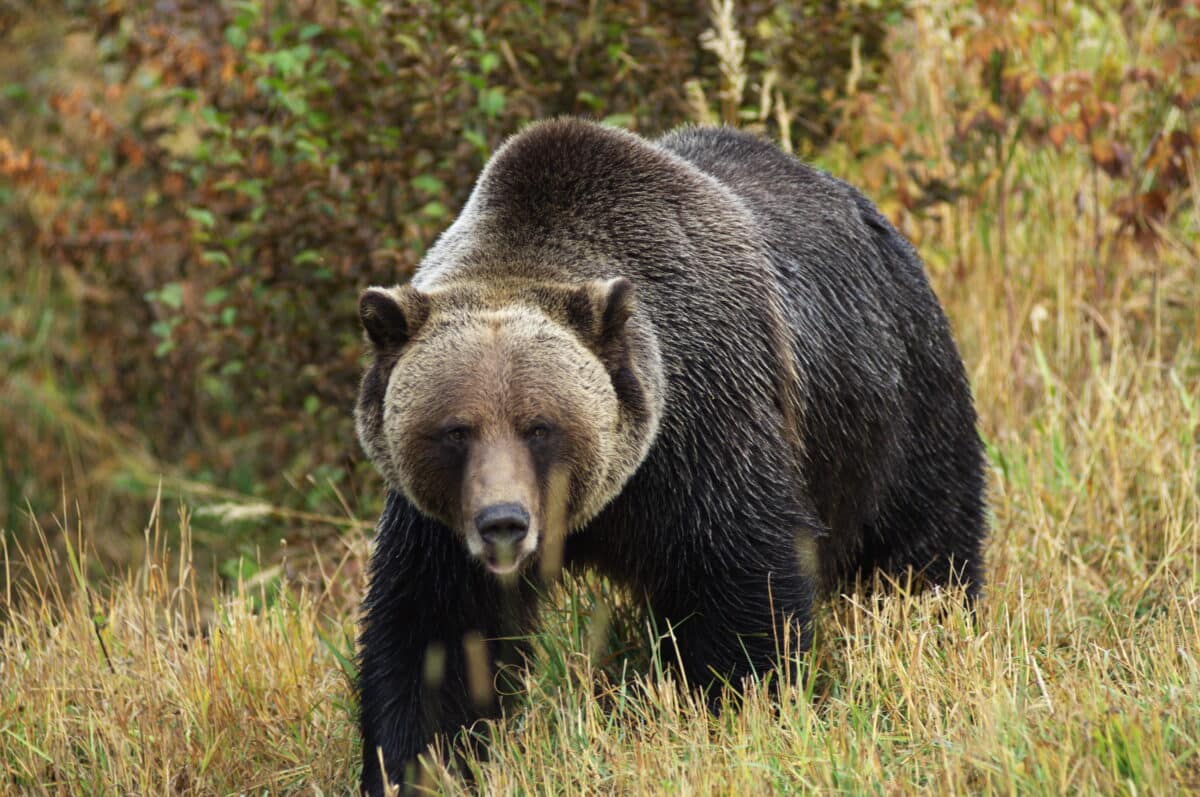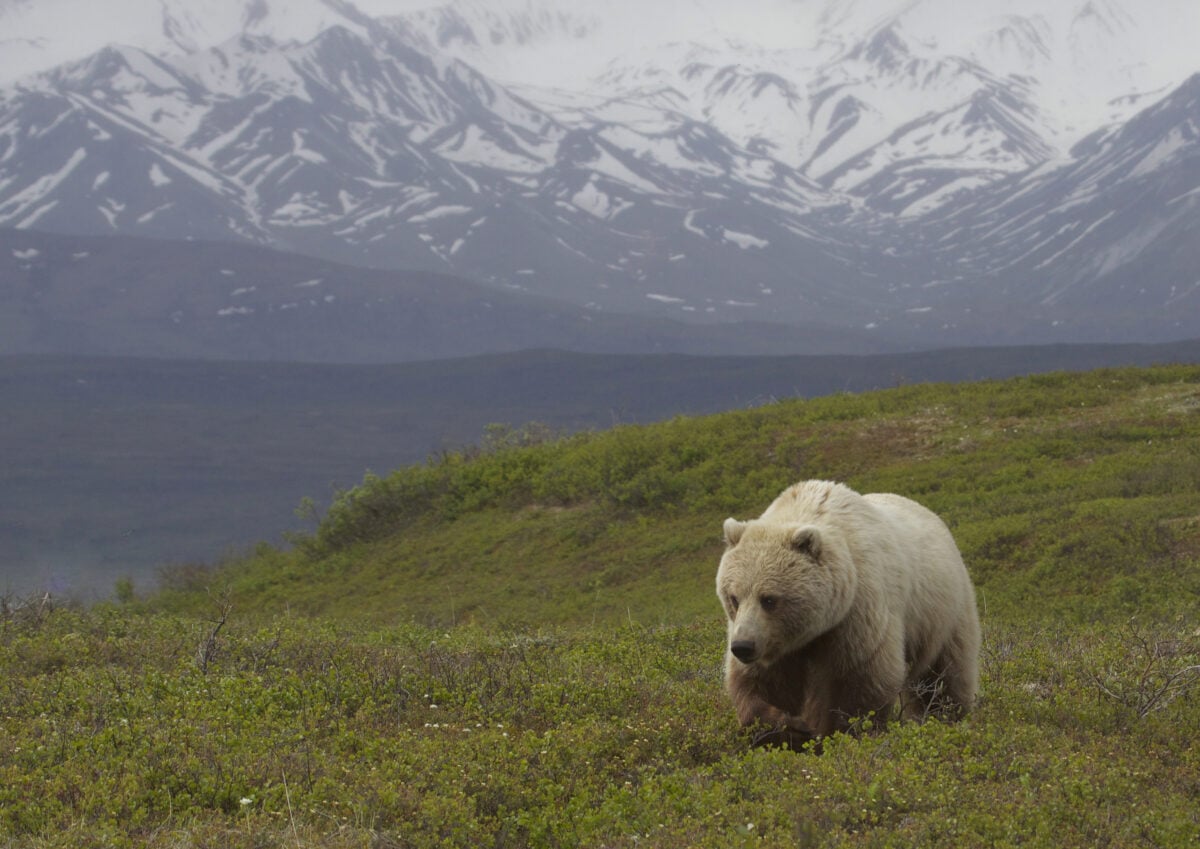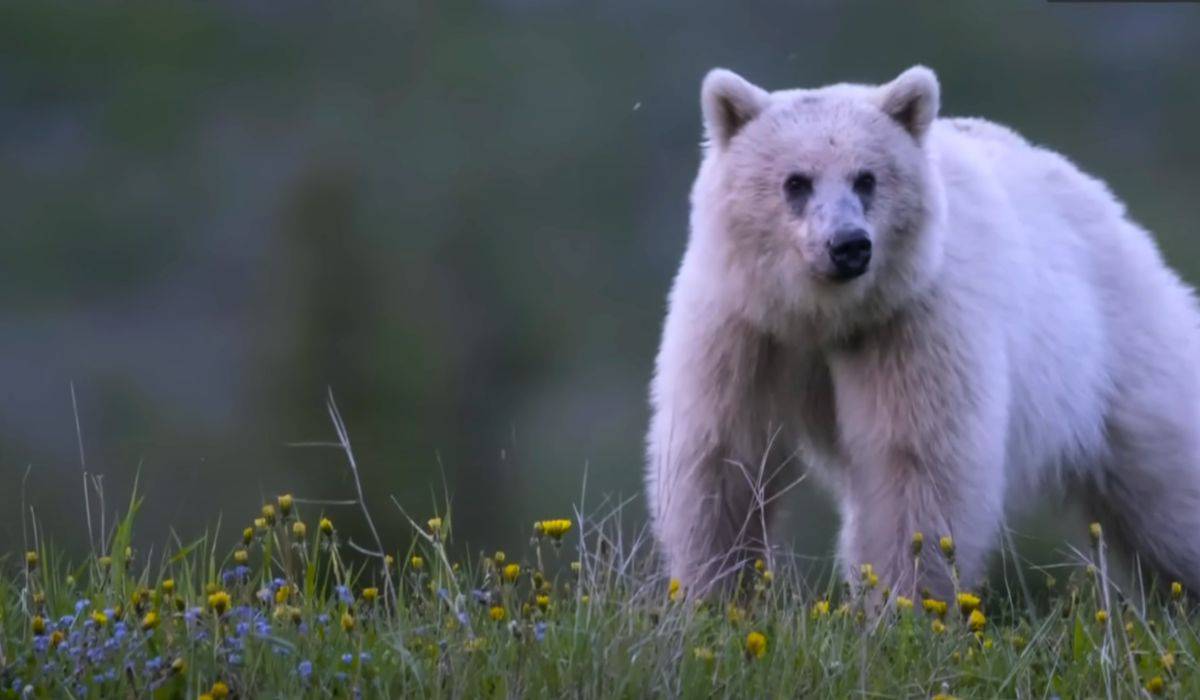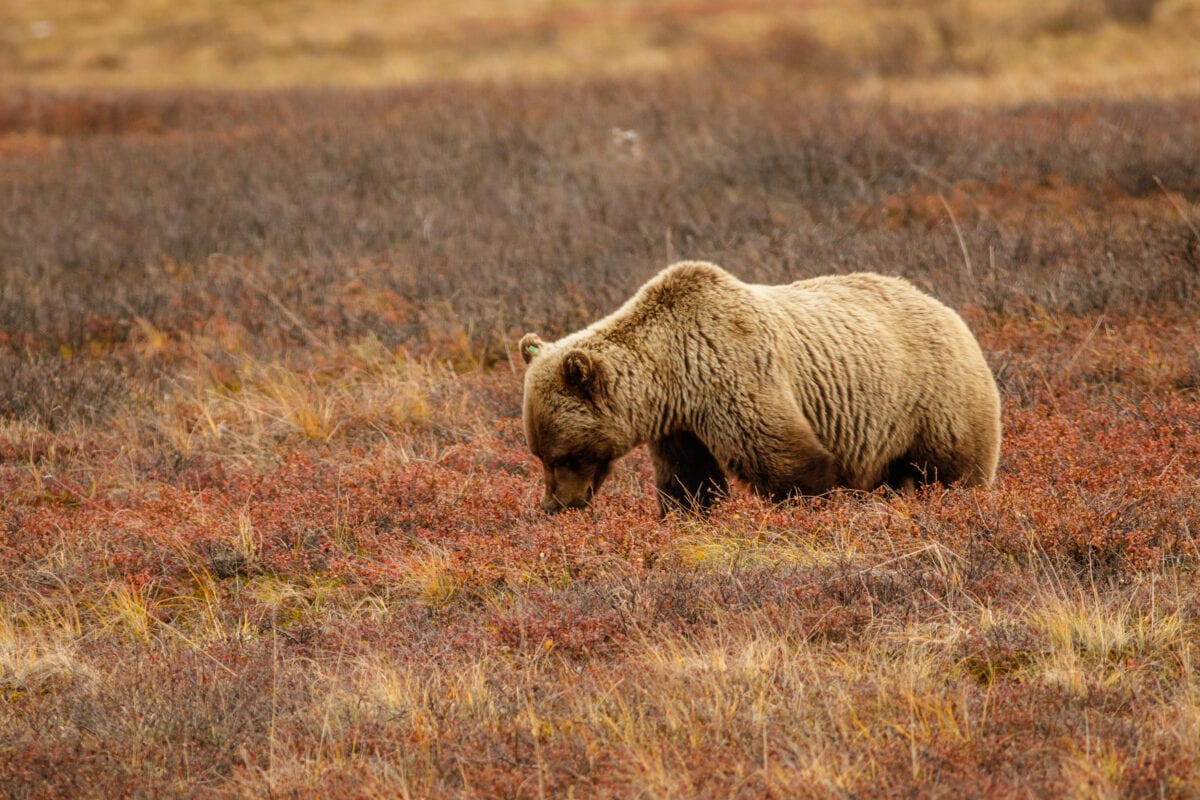Grizzly bears, with their imposing presence and remarkable adaptations, have captivated human imagination for centuries. These magnificent creatures, scientifically known as Ursus arctos horribilis, are a North American subspecies of brown bear that command both respect and admiration. From their incredible physical strength to their surprising intelligence, grizzlies represent one of nature’s most formidable and fascinating predators. This article explores twelve extraordinary facts about grizzly bears that showcase why these animals continue to inspire awe and wonder in wildlife enthusiasts around the world.
12. Grizzlies Can Run at Surprising Speeds

Despite their massive bulk, grizzly bears can achieve astonishing speeds when motivated. These bears can sprint at up to 35 miles per hour (56 km/h), making them faster than the world’s fastest human runners. This remarkable speed is particularly impressive considering an adult male grizzly can weigh up to 800 pounds (363 kg). Their ability to accelerate quickly helps them catch prey and respond to potential threats. This combination of size and speed makes the grizzly bear one of the most physically imposing predators in North America, capable of overtaking most animals—and humans—in a short-distance pursuit.
11. Their Sense of Smell Outperforms Dogs

Grizzly bears possess one of the most powerful noses in the animal kingdom. Their sense of smell is approximately seven times more sensitive than that of a bloodhound and can detect food sources from up to 20 miles (32 km) away under ideal conditions. This extraordinary olfactory ability allows them to locate carcasses buried under several feet of snow, find hibernating ground squirrels beneath the soil, and even detect the scent of human food sealed in containers. Their nasal mucosa contains hundreds of times more sensory cells than humans possess, making their sense of smell one of their most important survival tools for finding food and avoiding danger in their vast territories.
10. Grizzlies Dig Massive Dens for Hibernation

When preparing for winter hibernation, grizzly bears undertake impressive construction projects. They can dig dens measuring up to 8 feet (2.4 meters) wide and 6 feet (1.8 meters) high, often excavating several tons of earth and rock in the process. These dens are typically located on north-facing slopes at high elevations, where snow accumulates early and provides good insulation. The bears line these dens with vegetation, creating a comfortable nest for their long winter sleep. What’s particularly remarkable is that they typically dig a new den each year rather than reusing old ones, demonstrating their tremendous strength and construction capabilities. During particularly cold winters, snow can completely cover these dens, providing additional insulation that helps maintain a relatively stable internal temperature above freezing.
9. Their Claws Can Grow to 4 Inches Long

One of the most distinctive features of grizzly bears is their impressive claws. Unlike the shorter, curved claws of black bears that are adapted for climbing trees, grizzly bear claws can grow up to 4 inches (10 cm) in length and are relatively straight. These formidable tools are specialized for digging—whether for roots and bulbs, burrowing rodents, or excavating hibernation dens. The claws are not retractable and show considerable wear over time as bears use them extensively for foraging. Their light color contrasts with the bear’s fur, making them visibly distinct and contributing to the “grizzled” appearance that gives these bears their common name. These powerful digging implements can move large rocks and tear apart logs with ease, allowing grizzlies to access food sources that remain inaccessible to other predators.
8. Grizzlies Have a Remarkable Memory

Grizzly bears possess exceptional cognitive abilities, particularly when it comes to spatial memory. They can remember specific feeding locations years after visiting them, recalling precise berry patches, salmon streams, and other food sources within their extensive home ranges. This remarkable memory allows them to create mental maps of their territory, which can span hundreds of square miles. Researchers have documented bears returning to productive feeding areas on almost exactly the same date each year, suggesting they not only remember where food sources are located but also when they’ll be at their peak. This sophisticated memory system helps grizzlies maximize their caloric intake during crucial feeding periods, especially during hyperphagia—the intense period of feeding before hibernation when bears need to gain substantial weight.
7. Their Bite Force Exceeds That of Lions

Grizzly bears possess one of the most powerful bite forces in the animal kingdom, measuring approximately 1,200 pounds per square inch (PSI). This crushing power significantly exceeds that of lions (650 PSI) and nearly all other terrestrial predators. This tremendous force allows grizzlies to crack open tough nuts, crush bones to access nutritious marrow, and dispatch large prey efficiently. Their jaw strength is complemented by specialized molars designed for grinding plant material, showcasing their omnivorous adaptation. The combination of sharp canines for tearing meat and flat molars for processing vegetation makes their dentition remarkably versatile. This exceptional bite force, coupled with their massive neck muscles, enables grizzlies to be highly effective predators despite spending the majority of their feeding time consuming plant material.
6. Grizzly Cubs Are Born Remarkably Small

Despite their eventual massive size, grizzly bear cubs begin life incredibly small, weighing only about 1 pound (0.5 kg) at birth. This represents approximately 1/400th of their potential adult weight—one of the most dramatic size differences between newborns and adults among mammals. Born during winter hibernation while the mother is still in the den, these tiny cubs are blind, nearly hairless, and completely dependent. Their small birth size allows female bears to conserve energy while pregnant during hibernation when they don’t eat, drink, urinate, or defecate for months. The cubs nurse on rich milk containing up to 33% fat (compared to about 4% in human milk), allowing them to grow rapidly. By the time they emerge from the den in spring, cubs typically weigh 15-20 pounds (7-9 kg), representing an extraordinary growth rate during these critical first months.
5. They Can Remember Human Encounters for Years

Grizzly bears have demonstrated a remarkable ability to remember interactions with humans, sometimes retaining these memories for decades. Wildlife biologists who have trapped and tagged bears for research purposes have documented cases where individual bears showed recognition and specific behavioral responses when encountering the same researchers years later. This long-term memory for human encounters has significant implications for bear management and conservation efforts. Bears that have negative experiences with humans may develop avoidance behaviors that persist for years, while those that associate humans with food rewards may become dangerously habituated and seek out human areas. Their ability to form these detailed, long-lasting memories of specific human interactions showcases their cognitive sophistication and underscores the importance of ensuring human-bear encounters remain respectful and minimally disruptive.
4. Grizzlies Create “Day Beds” for Resting

Grizzly bears are meticulous about creating comfortable resting spots called “day beds” where they relax between feeding sessions. These carefully constructed beds are often located in sheltered areas that provide good visibility of the surroundings while offering protection from wind and sun. Bears will excavate shallow depressions in the ground, sometimes removing rocks and debris to create a more comfortable surface. They then line these areas with vegetation such as grasses, ferns, or conifer boughs. Researchers can identify individual bears by their distinctive bed-making styles, with some bears consistently creating more elaborate beds than others. These day beds differ from hibernation dens and are used throughout the active season. The careful attention bears pay to creating these resting spots demonstrates their preference for comfort and their ability to modify their environment to meet their needs.
3. Their Hump is Actually Pure Muscle

The distinctive shoulder hump that characterizes grizzly bears is not fat but a massive muscle called the dorsocervical hump. This specialized muscle mass is primarily composed of the trapezius muscles and provides grizzlies with exceptional digging power. When a grizzly digs for roots, bulbs, ground squirrels, or excavates a den, this powerful muscle group delivers tremendous downward force through the bear’s forelimbs. The hump is one of the most reliable ways to distinguish a grizzly from a black bear, which lacks this feature. This adaptation evolved to support the grizzly’s foraging strategy, as up to 90% of their diet can consist of plant foods and small animals that must be dug from the ground. The remarkable size of this muscle—which can weigh up to 100 pounds (45 kg) in large males—stands as a testament to the evolutionary importance of digging ability to grizzly bear survival.
2. Grizzlies Have Individual “Personalities”

Research has increasingly demonstrated that grizzly bears display distinct individual behavioral traits that remain consistent over time—what biologists now recognize as animal personalities. Some grizzlies are naturally more bold and exploratory, while others exhibit shyer, more cautious temperaments. These individual differences affect how bears respond to novel situations, their willingness to use new food sources, and how they interact with other bears. Studies tracking bears over multiple years have shown these personality traits remain relatively stable throughout their lives. These individual differences have important implications for conservation, as bears with different personality types may respond differently to human development, recreation activities, and management interventions. The recognition of these distinct personalities challenges older views of wildlife as interchangeable units within a population and highlights the complexity of bear behavior and ecology.
1. They Can Live for 30+ Years in the Wild

While many large predators have relatively short lifespans in the wild, grizzly bears can live remarkably long lives. In natural settings, grizzlies regularly reach 20-25 years of age, with some exceptional individuals living to 30 or even 35 years. This longevity is particularly impressive considering the physical demands of their lifestyle, including the physiological stress of hibernation. Female grizzlies typically live longer than males, likely because males engage in more aggressive competition for mates and territories. The oldest documented wild grizzly was a female in Yellowstone estimated to be 38 years old. This long lifespan allows individual bears to accumulate extensive knowledge about their environment, including seasonal food sources and survival strategies for varying conditions. Their longevity also means they have relatively slow reproductive rates, with females typically having their first cubs at age 5-8 and producing new litters only every 3-4 years, making population recovery challenging when numbers decline.
Conclusion: Magnificent Creatures Deserving Our Respect

Grizzly bears represent one of nature’s most impressive achievements—a perfect blend of power, intelligence, and adaptability that has allowed them to thrive across diverse landscapes for thousands of years. Their remarkable physical capabilities, from crushing bite force to incredible speed, combine with sophisticated cognitive abilities including exceptional memory and problem-solving skills. Despite their fearsome reputation, grizzlies are primarily peaceful animals that prefer to avoid conflict when possible, focusing instead on the constant search for food to sustain their massive bodies. As we continue to share landscapes with these magnificent creatures, understanding their biology, behavior, and ecological importance becomes increasingly vital for ensuring their survival. By appreciating the awe-inspiring characteristics of grizzly bears, we gain not only scientific knowledge but also a deeper connection to the wild places where these iconic animals continue to roam.
- 14 Dog Breeds That Love to Cuddle - August 9, 2025
- 11 Signs Your Horse Might Be Bored - August 9, 2025
- Jurassic World Dominion Dinosaurs - August 9, 2025
